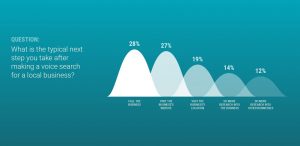Smart marketers know that email list segmenting is essential to managing their lists. Why? Because it saves them from marketing to uninterested people, increases their open rates, boosts their click rates, and, most importantly, decreases their unsubscribe rates.
Segmenting an email list drastically improves the effectiveness of their email campaigns because they’re sending the right message to the right readers at the right time. Most marketers use their email marketing software to segment their lists, but you can also use your email opt-in forms to do it too.
In this post, I’ll show you how to use email opt-in forms to segment your list and make managing your email list a breeze (and increase business at the same time!).
Why Segment Your Email List?
Segmented emails earn nearly 101 percent higher clickthrough rates than non-segmented ones and makes it easier to craft marketing campaigns to your subscribers because you’ll be able to personalize the content for each target audience. Not only that, but personalized emails created through segmentation drive 6X higher revenue and transaction rates for businesses.
Let’s take a closer look at how you can use your email opt-in forms to segment your email list quickly and efficiently.
1. Identify New Visitors
A full-screen welcome mat opt-in can help you identify new visitors when you display it only for new visitors to your homepage. You can also use a smaller, lightbox pop-up opt-in form to track first-time visitors to your blog, or any other page on your site.
Here, Sportique uses a welcome mat opt-in to offer first-time visitors a 10 percent discount off their first purchase if they sign up for their newsletter. This is a great way to turn first-time visitors into customers.
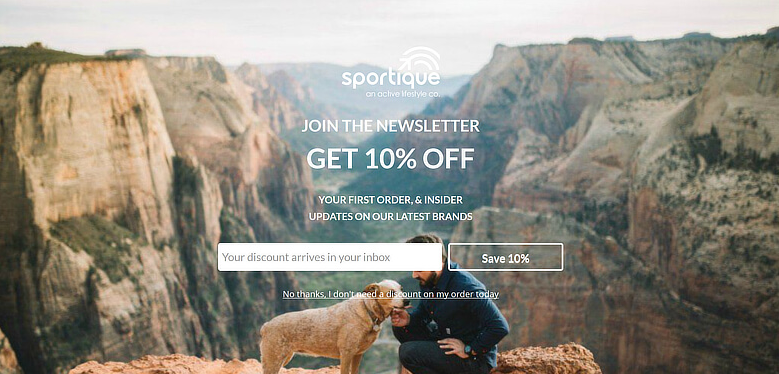
People are first attracted to this opt-in by the discount offer, but then, as they continue reading, they see they’ll also get insider updates from the site. They’re getting something of value today, and in the future. When they enter their info in this form, you can use your email marketing software to send them a welcome email to help them learn even more about your brand.
2. Identify Qualified Leads
People browsing your website are considered leads by marketers. These are people who may or may not buy from you, but by browsing, they’re indicating their interest in you and your brand.
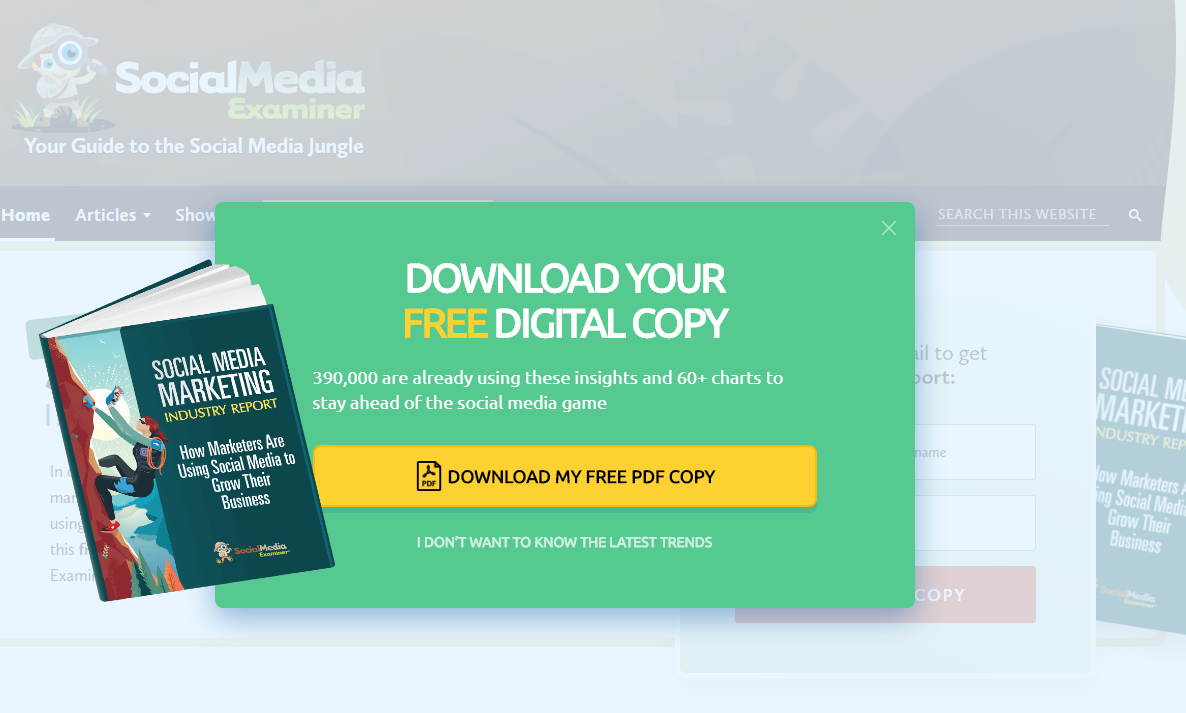
By offering them a downloadable piece of content, like Social Media Examiner does here, you can encourage them to find out more about you. When they download this lead magnet, you can identify who is really interested in your brand and send them further relevant information in the future.
3. Find Out What Topics People Are Interested In
Curious to know what subjects your readers are interested in? You can use an opt-in form that lets them choose, like Primavera Kitchen does.
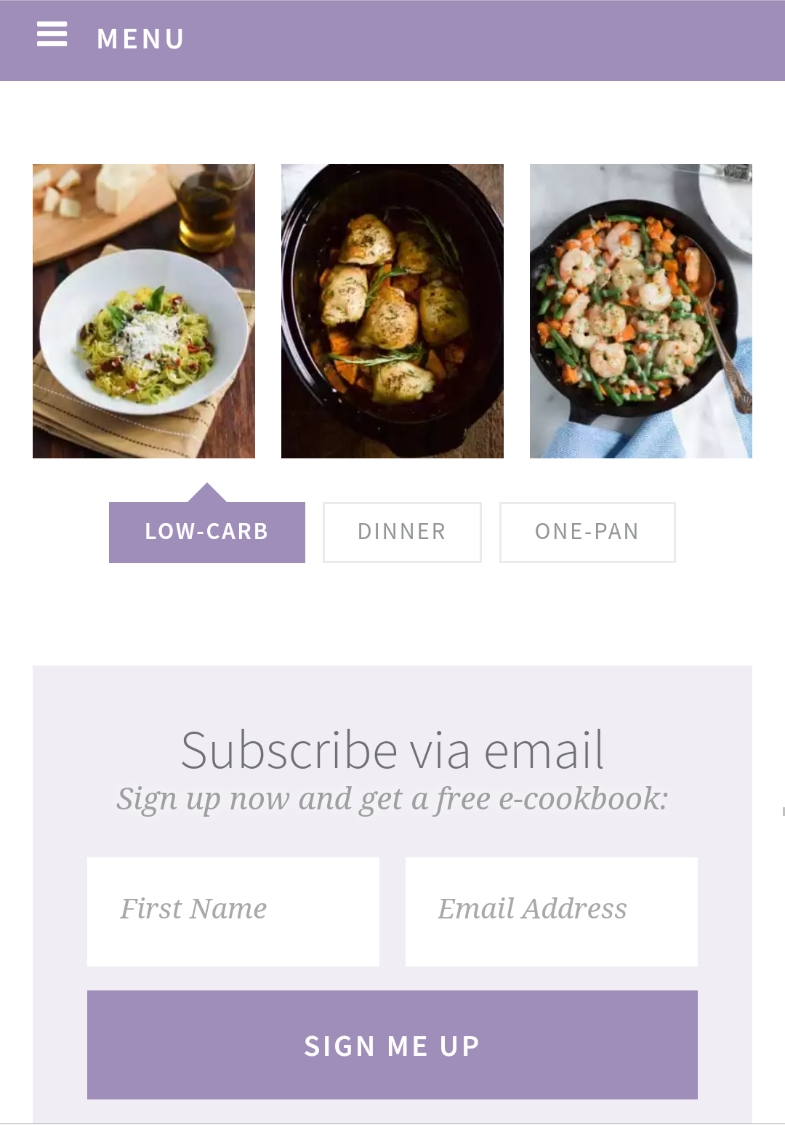
People choose the recipe types they like and enter their contact information to get it. They get information right now and you only send them the relevant content in the future. With this tactic, you can avoid annoying your subscribers by sending content they don’t care about. Plus, you can discover new subject areas to write about or new products to create based on how people fill out the opt-in form.
4. Discover Where People Are
Another piece of information marketers want to know is the location of people visiting their site. Depending on what your site is about or what products you’re selling, you may want to make different offers to different locations.
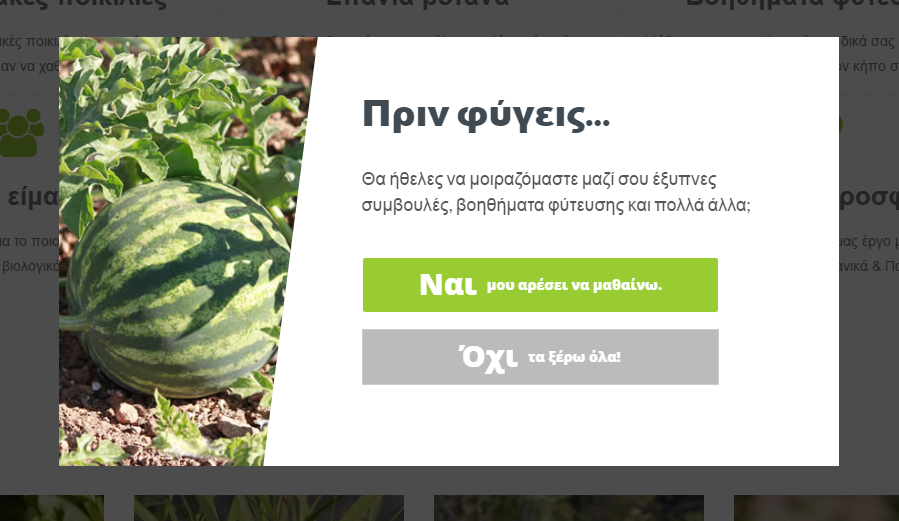
Olyplant uses website cookies to determine a site visitor’s location and then displays a country-specific opt-in form. Here, the Greek opt-in asks whether they’d like to receive smart tips, info about planting aids, and more via email. Based on their choice, Olyplant knows what content these people want to receive, but also where they’re located. Which helps when they plan their newsletters since they’ll need to allow for translation time. Something to consider when you deal with customers around the world.
5. Identify People Ready to Buy
Not everyone who starts the buying process online finishes it; globally, nearly 70 percent of us don’t actually buy. Ouch.
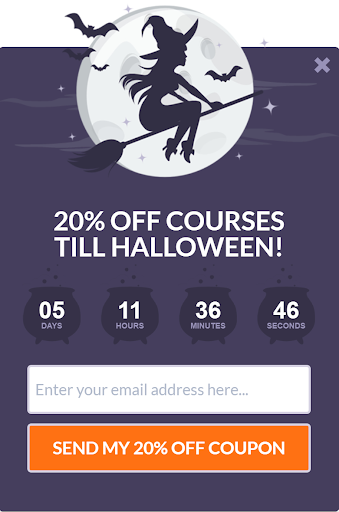
Instead of letting them browse away from your site without buying, you can use an opt-in form to offer a coupon for their next purchase when they try to navigate away from their shopping cart. When they use the coupon, you’ll know they like discounts, so you can plan to send them deals in the future (the FOMO is real for most people when it comes to deals).
Over to you
These are just some of the ways to use opt-in forms to segment your email list. Instead of letting your email marketing software do all the heavy lifting, try using different forms instead. You may discover some innovative ways to manage your email list with them. It’s another tool to uncover more about your website visitors and customers that’ll help you create an engaged, segmented email list that’ll grow your business.
Digital & Social Articles on Business 2 Community
(49)
Report Post


